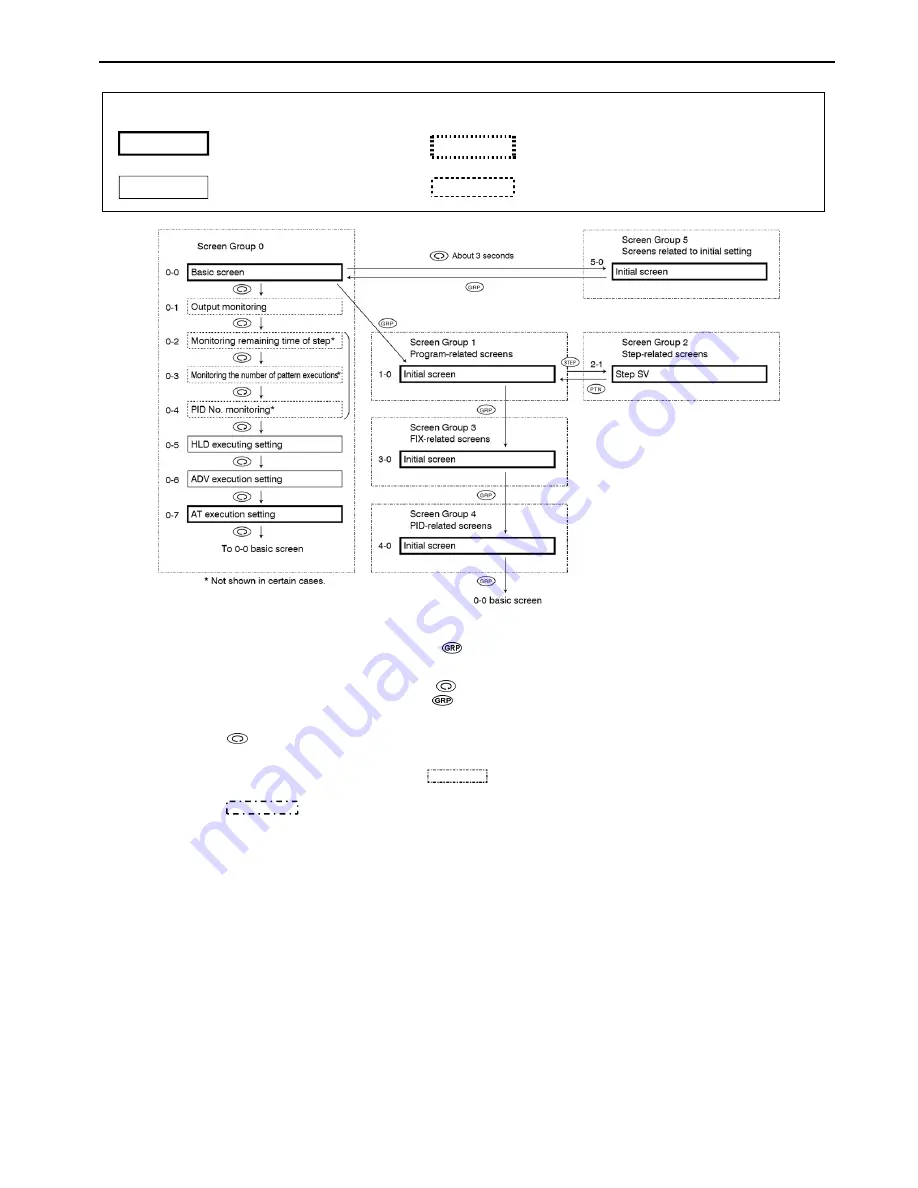
- 9 -
5. Explanation of Screens and Setting
5-1. Parameter Flow
NOTE
:
Four kinds of frame lines signify the following. The figure on the left of each frame represents screen No.
Screens regularly shown by key
operation and other means.
Screens shown when appropriate option is added or
selected.
Screens may or may not be shown
depending upon setting.
Screens for monitoring (without automatic return).
(1) How to Move from Screen Group to Screen Group and Explanation of Screen Groups
NOTE 1
:
To move among screen groups 0, 1, 3 and 4, press the
key on the basic screen of screen group 0 or the initial screens of screen
group 1, 3 or 4.
NOTE 2
:
To move between screen groups 0 and 5, pressing the
key for 3 seconds continuously on the basic screen of screen group 0 calls
the initial screen of screen group 5, and pressing the
key on the initial screen of screen group 5 calls the basic screen of screen
group 0.
NOTE 3
:
Pressing the
key in any screen group calls the next screen and pressing it on the last screen of a screen group calls the initial
screen.
NOTE 4
:
A key shown above and outside a chain line frame (
) surrounding each screen group means that you can move from any
of the screen within the frame to a designated screen by pressing that key. (This applies to screen groups 1, 2, 3, 4 and 5.)
Example:
ĺ
NOTE 5
:
The screen group 1 has patterns 1 - 4. (One pattern has 16 setting screens.) The number of patterns is selectable (which is set on the
5-1 screen; the initial value is 4).
NOTE 6
:
The screen group 2 has steps 1 to 40 (one step containing three setting screens). The number of steps is selectable (which is set on the
1-2 screen; the initial value is 10).
NOTE 7
:
The screen group 4 has 6 PID Nos. (Each having 8 setting screens) and Zone PID.
NOTE 8
:
Within a screen group, you can move from screen to screen by pressing an appropriate key indicated in screen sequences (which are
shown in the following page on).
Screen Group










































